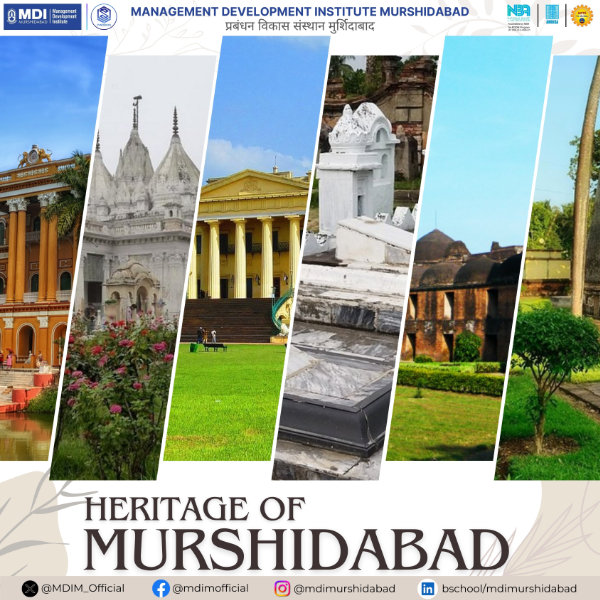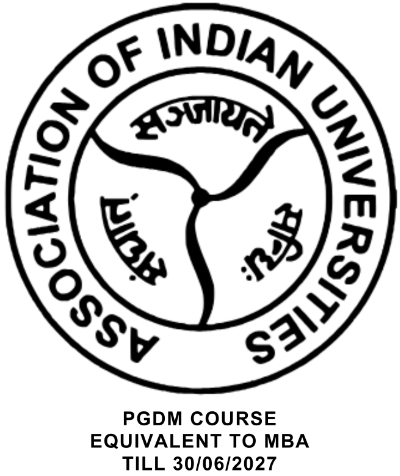Historical and Cultural heritage of the Murshidabad region

Murshidabad: Bengal’s Forgotten Crown Jewel
Nestled on the eastern banks of the Bhagirathi River, Murshidabad was once the wealthiest capital of Bengal, contributing to 20% of India’s GDP and 5% of the global economy. Known for its flourishing trade in textiles, shipbuilding, and other crafts, the town was a cosmopolitan hub that attracted traders from across the globe. Today, Murshidabad remains a treasure trove of history, culture, and art, waiting to be rediscovered by travelers.
The Golden Age of Murshidabad
The Nawabs and Jagat Seth
Murshidabad owes much of its prominence to Murshid Quli Khan born as Surya Narayan Mishra, who established the town as the capital of Bengal under Mughal rule. The town prospered under his administration, with Jagat Seth, Bengal’s famed banker, playing a pivotal role. Known as the “Rothschild of India,” Jagat Seth’s financial prowess facilitated the region’s economic dominance. However, after the defeat of Nawab Siraj ud-Daulah at the Battle of Plassey in 1757, British colonial rule marked the decline of Murshidabad’s political and economic stature.
Architectural and Cultural Heritage
Majestic Palaces and Historic Sites
- Hazarduari Palace: This grand structure, with its thousand doors, showcases Indo-
European architecture and houses an extensive collection of artifacts. - Cossimbazar Palace: Built in 1740, this palace features a museum, temples, and
panoramic views from its watchtower. - Old English Cemetery: A hauntingly beautiful resting place for British officials, including Warren Hastings’ daughter Elizabeth.
Sacred Temples and Religious Significance
- Kiriteshwari Temple: One of India’s 52 Shakti Peethas, this thousand-year-old shrine is
deeply revered by devotees. - Paataleshwar Shiva Temple: Famous for its Jyotirlinga and surrounded by over 100 smaller temples, this site reflects Murshidabad’s spiritual vibrancy.
- Char Bangla Temples: Known for their intricate terracotta carvings depicting scenes from
the Mahabharata and Ramayana.
The Armenian Legacy
The Armenian Church at Saidabad, built in 1758, highlights the significant role Armenian merchants played in Bengal’s trade and politics. Though abandoned after the decline of commerce, it was restored in 2006, preserving its historical importance.
Sheherwali Culture: A Fusion of Traditions
The Sheherwali community, primarily Jain merchants, brought a unique blend of Marwari and Bengali cultures to Murshidabad.
- Cuisine: Their vegetarian dishes, infused with spices and Mughal influences, include
delights like Malpua, Patisapta, and Aam Shol curry. - Lifestyle: Known for their opulent homes and Jain temples, they contributed significantly to Murshidabad’s heritage.
Preserving the Legacy: Murshidabad Heritage Development Society (MHDS)
MHDS is dedicated to reviving Murshidabad’s historical and cultural splendor.
- Restoration Initiatives: Projects to conserve monuments, including palaces, temples, and
mosques. - Cultural Promotion: Organizing festivals and workshops to showcase Murshidabad’s arts,
crafts, and cuisine. - Community Support: Empowering artisans and promoting sustainable tourism.
Why Visit Murshidabad?
Arts and Crafts
Murshidabad’s skilled artisans continue to produce exquisite silk sarees, terracotta art, and gold
embroidery. These crafts are a testament to the town’s enduring legacy.
Unique Experiences
- River Cruises: Explore the serene Bhagirathi while enjoying glimpses of the town’s majestic heritage.
- Local Festivals: Engage in cultural festivities that bring Murshidabad’s vibrant traditions to Life.
Historical Exploration.
Sites like the Murshidabad District Museum, housing rare manuscripts and artifacts, provide a deeper understanding of the region’s rich past.
A Call to Rediscover Murshidabad
Murshidabad stands as a living museum of Bengal’s glorious history, waiting to enchant visitors with its timeless charm. From palaces and temples to its rich Sheherwali culture, this town offers an unparalleled journey into the past. It is also home to inspiring tales of patriotism, such as the contributions of Mr. Radhapada Premanik, a freedom fighter from Beldanga, Murshidabad, who hosted Netaji Subhas Chandra Bose at his house during India’s struggle for independence. As you step into Murshidabad, you’ll not only witness history but also contribute to preserving its legacy for generations to come.
Sightseeing in Murshidabad
Murshidabad, a town filled with rich culture, offers a plethora of attractions that showcase its richness and architectural heritage. Here are some must-visit sites:
- Hazarduari Palace: Built in 1837, this three-storey palace, known as the “palace with a thousand doors,” features European architectural style. It now serves as a museum housing a vast collection of armory, paintings, and artifacts.
- Katra Mosque: Constructed between 1723 and 1724 by Nawab Murshid Quli Khan, this mosque is one of the oldest in the region and reflects the architectural grandeur of that era.
- Nizamat Imambara: Situated opposite the Hazarduari Palace, this is one of the largest Shia assembly halls in Bengal, rebuilt in 1847 after a fire destroyed the original structure.
- Kathgola Palace and Gardens: This estate includes the Kathgola Palace and the Kathgola Jain Temple, set amidst expansive gardens, reflecting the elegance of the Jain merchants of the time.
- Jafarganj Cemetery: This cemetery houses the tombs of the Nawab’s family members, including the grave of Mir Jafar, the first Nawab of Bengal under British influence.
- Karnasubarna: An archaeological site believed to be the ancient capital of King Shashanka, offering insights into early medieval Bengal.
- Kherur Mosque: A historic mosque known for its unique architectural features, reflecting the Islamic heritage of the region.
- Dutch Cemetery: A relic of the Dutch colonial presence in Bengal, this cemetery contains the graves of Dutch settlers showcasing the region’s diverse colonial history.
A visit to these sites provides a captivating journey through Murshidabad’s history and showcases the town’s architectural beauty.
House of Sheherwali
The House of Sheherwali, located in Azimganj, Murshidabad, is a unique museum hotel offering guests an immersive experience into the rich cultural tapestry of the Sheherwali community. This heritage property showcases a remarkable collection of artifacts from British, Dutch, French, Portuguese, Mughal, and Bengali origins, reflecting the diverse influences that have shaped the history of Murshidabad.
Established by Mr. Pradip Chopra, a dedicated custodian of Sheherwali heritage, the House of Sheherwali aims to preserve and celebrate the traditions of the Jain merchant community that settled in Murshidabad during the 18th century. The Sheherwalis, originally from Rajasthan, became prominent traders and landowners, developing a unique culture that blended Rajasthani, Mughal, British, and Bengali elements.
The hotel has rooms styled after prominent Sheherwali Sardar families, with modern amenities, spa therapies, and a rooftop amphitheater with a beautiful Ganges view.
A highlight of the stay is the culinary journey into Sheherwali vegetarian cuisine, which combines Rajasthani, Mughal, and Bengali flavors. The hotel sources organically grown fruits and vegetables from its own farm, ensuring fresh and authentic dishes. This unique cuisine reflects the Sheherwalis’ Jain values and their adaptation to the local culture.
Guests can explore nearly 50 protected sites within a 5 km radius and can take guided walks and cultural tours.
The House of Sheherwali is a perfect blend of tradition and luxury, allowing guests to experience the Sheherwali culture while enjoying modern comforts.
Murshidabad – The Capital town of Bengal Subah in the 17th Century
Murshidabad, located in present-day West Bengal, served as the capital of Bengal Subah during the 17th century under the Mughal Empire. Bengal Subah was one of the wealthiest and most prosperous regions in the Mughal domain, encompassing parts of modern-day Bangladesh, West Bengal, and other neighboring states. After the dissolution of the Bengal Sultanate, which had been a major trading power, Bengal was incorporated into the Mughal Empire, becoming a vital part of its economic structure.
Murshidabad rose to prominence in 1704 when Murshid Quli Khan, Diwan of Bengal, moved the capital from Dhaka to this strategically located town along the Hooghly River. This shift marked a new era of political and economic consolidation in Bengal. The town became a key administrative and commercial center, with its bustling markets and river ports facilitating trade throughout the empire and beyond.
Bengal, known for its rich culture, textiles, and agriculture, thrived under Mughal and later Nawabi rule. Murshidabad, with its wealth and influence, emerged as a significant player in global trade, attracting merchants from across the world. The town’s architectural and cultural legacy reflects the opulence of the Mughal era, making it a vital historical hub during the 17th and early 18th centuries.
Murshidabad: The Wealthiest Town of the 17th Century
In the 17th century, Murshidabad emerged as one of the wealthiest towns in the world. Located in present-day West Bengal, India, it became the capital of Bengal under Nawab Murshid Quli Khan in 1704, transforming into a vibrant hub of trade and culture. Its strategic position along the Bhagirathi River facilitated commerce, making it a key trading post for silk, muslin, spices, and precious stones. The renowned Bengal muslin, prized for its quality, attracted international traders, including the British, French, and Dutch.
The Nawabs were patrons of the arts, leading to the flourishing of literature, music, and architecture. Grand structures like the Hazarduari Palace and Katra Mosque reflect the town’s opulence and cultural diversity, where Hindus, Muslims, and Europeans coexisted harmoniously.
However, after the British victory in the Battle of Plassey in 1757, Murshidabad’s prominence declined as colonial rule reshaped trade routes. Today, while no longer a center of wealth, Murshidabad’s rich heritage and architectural marvels continue to attract visitors, serving as a reminder of its glorious past and significant role in Indian history.
Kathgola: A Jewel of Murshidabad
Nestled in the historic district of Murshidabad, Kathgola Palace is a remarkable reflection of the region’s rich cultural and architectural heritage. Built-in 1873 by the prominent Dugar family and currently maintained by Mr. Sanjay Doogar, the palace showcases a harmonious blend of European and Indian architectural styles, with intricate details that captivate its visitors.
Once surrounded by gardens flourishing with Kath Golap (Wood Roses), which inspired its name, the palace now serves as a museum. It houses an exquisite collection of chandeliers, mirrors, antique furniture, and statues reminiscent of Victorian and Renaissance art. The site also features beautifully designed Jain temples, adding a spiritual dimension to its grandeur.
Kathgola Palace is more than just a historical landmark; it is a gateway to Murshidabad’s illustrious past, offering an enriching experience to those who wish to delve into the artistry and legacy of this vibrant region.
Azimganj and Jiaganj: Hidden Gems of Murshidabad
Ref. Link: https://wbtourism.gov.in/Religious%20Tourism/details?template_id=1&id=63fc5ec5cec836803000e136
Azimganj and Jiaganj, located in the heart of Murshidabad, are twin towns that boast a rich cultural and historical legacy. Known for their flourishing Marwari Jain community, these towns became prominent trading and banking hubs during the 19th century. The wealth and influence of families like the Dugars, Nahars, and Kotharis are evident in the grand temples and palatial buildings that still adorn the towns.
Azimganj is home to stunning Jain temples, featuring intricate carvings and vibrant murals that showcase the community’s devotion and artistic excellence. Jiaganj complements this charm with its historical landmarks and serene surroundings, offering a perfect blend of heritage and tranquility.
A visit to these towns offers a glimpse into their prosperous past and spiritual significance. With their architectural marvels and cultural richness, Azimganj and Jiaganj stand as enduring symbols of Murshidabad’s glorious history, making them must-visit destinations for history enthusiasts.
Jagat Seth: A Visionary Banker of Bengal
Seth Manikchand, known as “Jagat Seth” (Banker of the World), was a trailblazing financier whose expertise shaped 18th-century Bengal. Born into a Marwari Jain family from Rajasthan, his father, Hiranand Sahu, migrated to Patna and prospered in the saltpetre trade, a vital commodity for European markets. Manikchand built upon his father’s success, expanding the business into one of Bengal’s most influential banking houses.
region’s revenue administration. Together, they restructured tax collection systems and curbed financial mismanagement, strengthening Bengal’s economy. His unmatched business acumen earned him the title “Jagat Seth” and the prestigious role of Bengal’s Treasurer-General, symbolizing his vital role in the province’s prosperity.
Jagat Seth and Murshid Quli Khan: A Friendship That Shaped Bengal’s History The enduring friendship between Jagat Seth and Murshid Quli Khan profoundly influenced Bengal’s socio-economic and political landscape in the early 18th century. Jagat Seth, a prominent banker and financier, played a crucial role in establishing his family as the region’s financial cornerstone, shaping Bengal’s commercial legacy.
Murshid Quli Khan, the first Nawab of Bengal, is renowned for laying a strong administrative foundation through reforms that ensured economic stability. His governance flourished due to Jagat Seth’s financial expertise, creating a powerful partnership that drove Bengal’s prosperity.
Their collaboration symbolized the synergy between finance and politics, enabling Bengal to thrive amidst challenges. Jagat Seth’s legacy as a visionary banker remains unparalleled, while their alliance continues to inspire as a testament to mutual trust and shared vision inshaping history.
Murshidabad: The Cradle of Indian Banking and a Symbol of Enduring Friendship Murshidabad holds a vital place in Indian history as the birthplace of the country’s banking system, established by the visionary Shri Jagat Seth. Known as the “Banker of the World,” Jagat Seth revolutionized India’s financial practices, leaving an indelible mark on trade andcommerce.
The town’s significance is further elevated by the enduring friendship between Jagat Seth and Murshid Quli Khan, the first Nawab of Bengal. Their collaboration combined financial expertise and administrative brilliance, driving revenue reforms and economic prosperity. Together, they shaped Bengal’s destiny, cementing Murshidabad’s legacy as a hub of cultural, political, and financial advancements. The town stands today as a symbol of their remarkable partnership and the transformative impact they had on India’s heritage.






